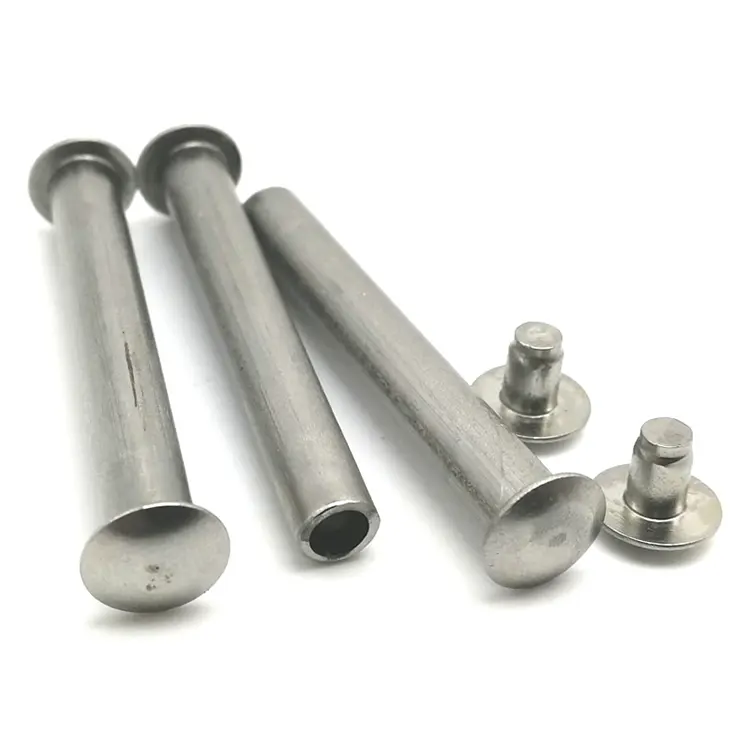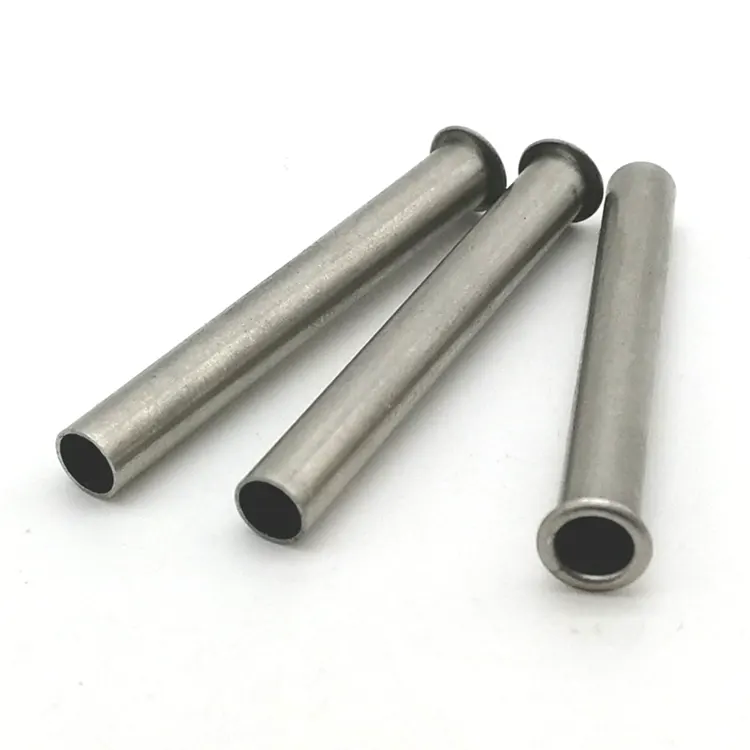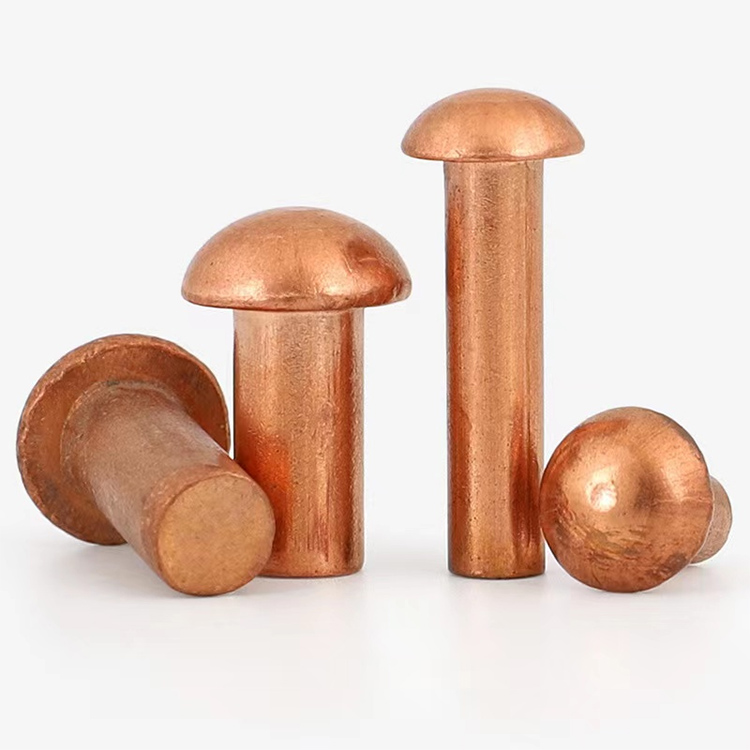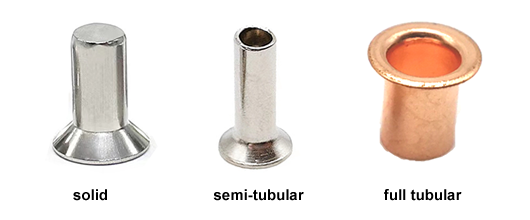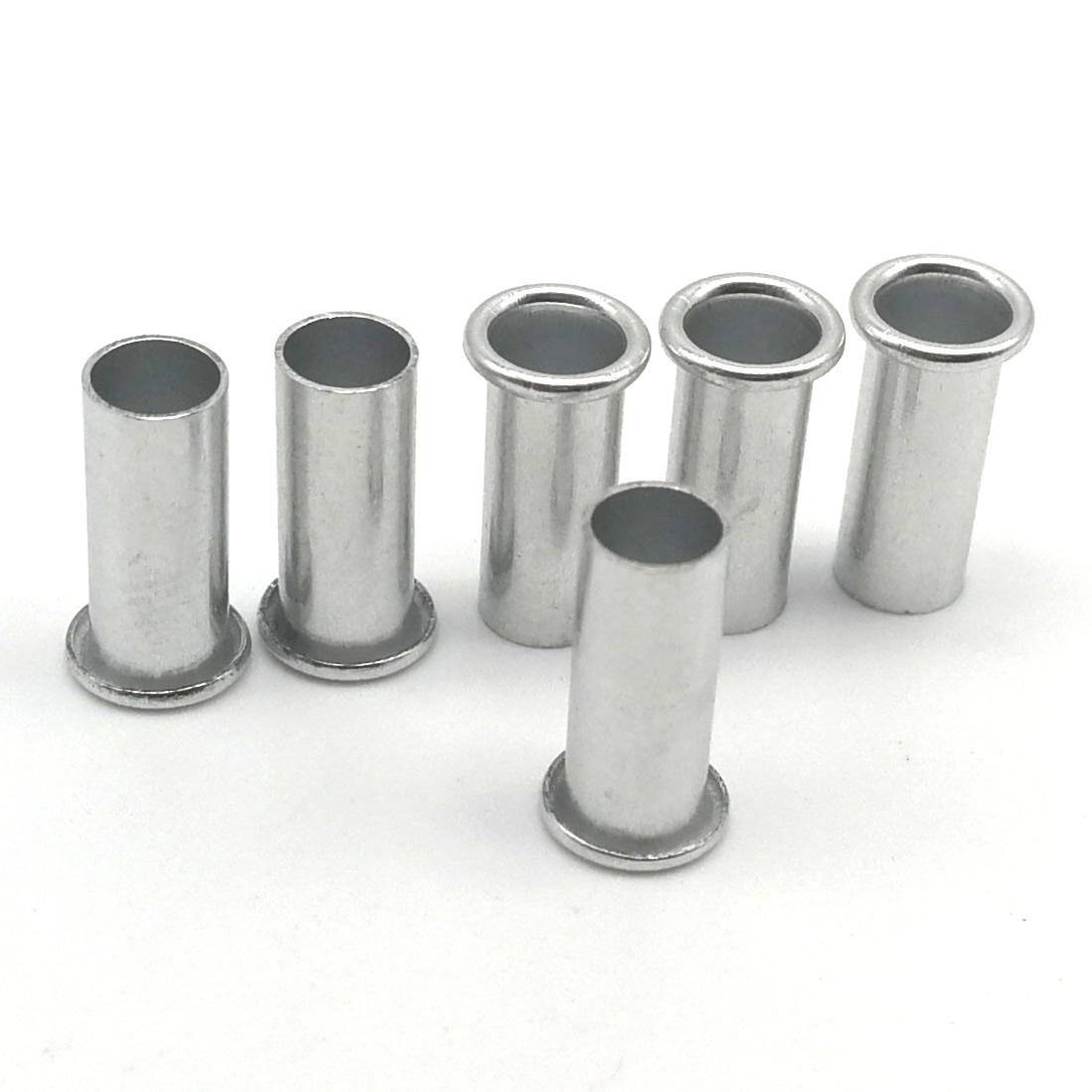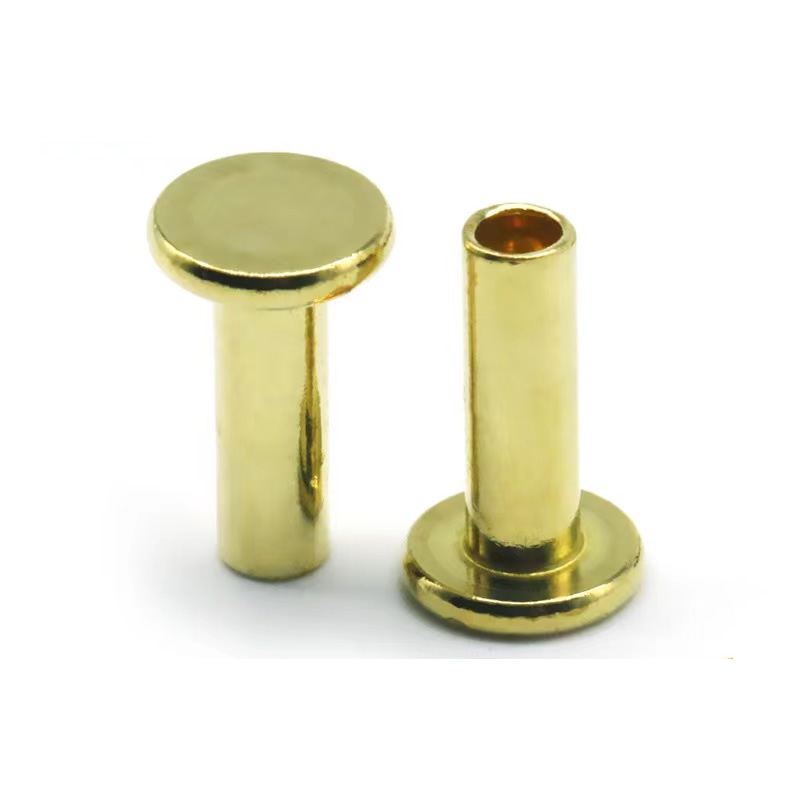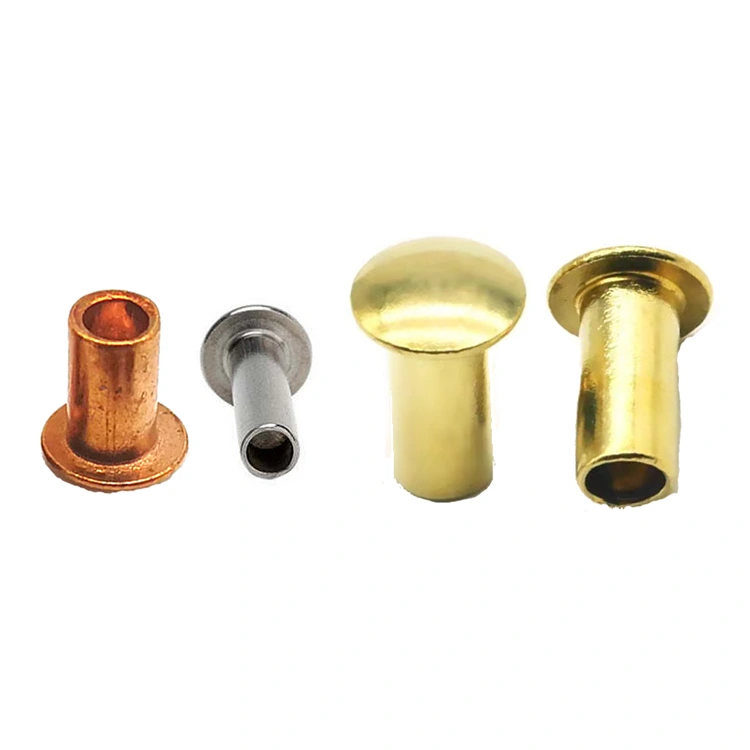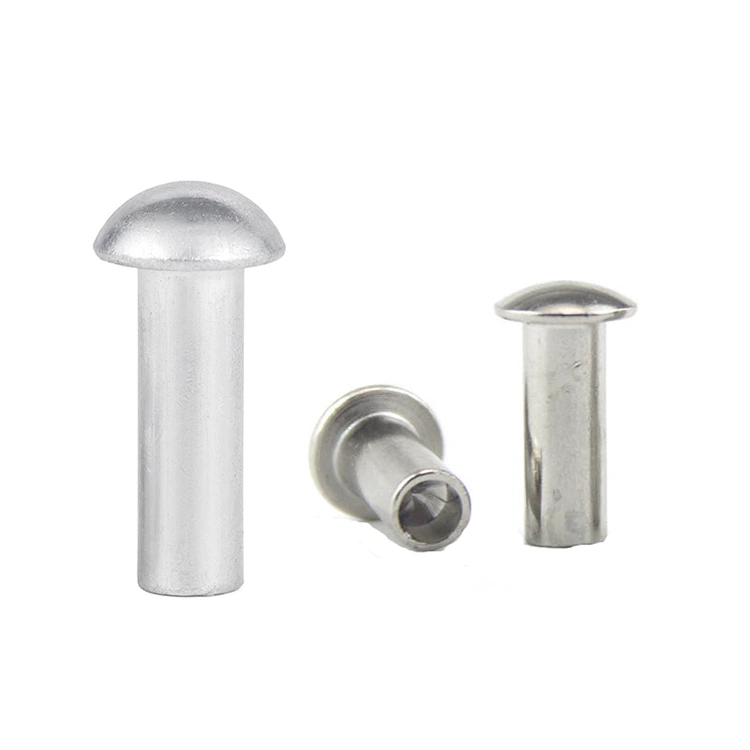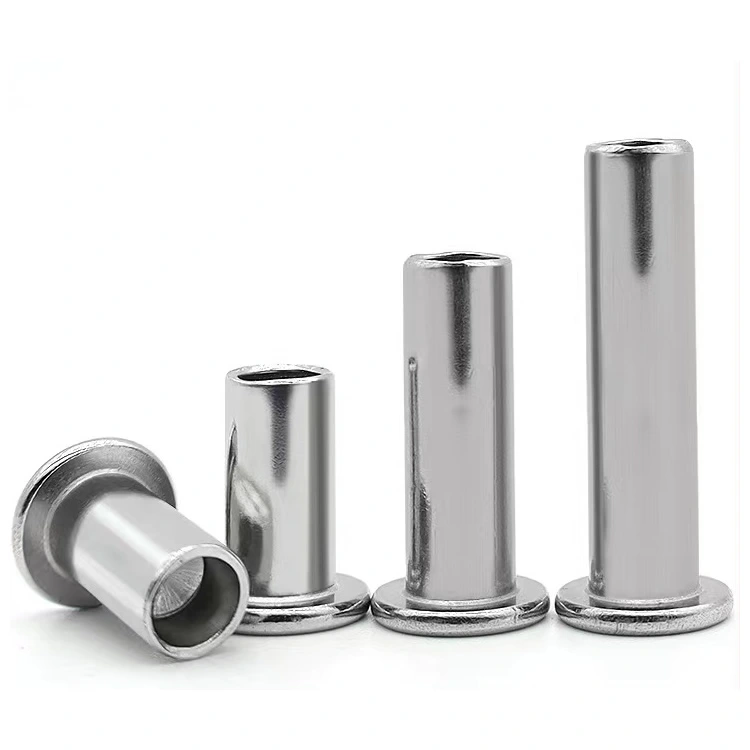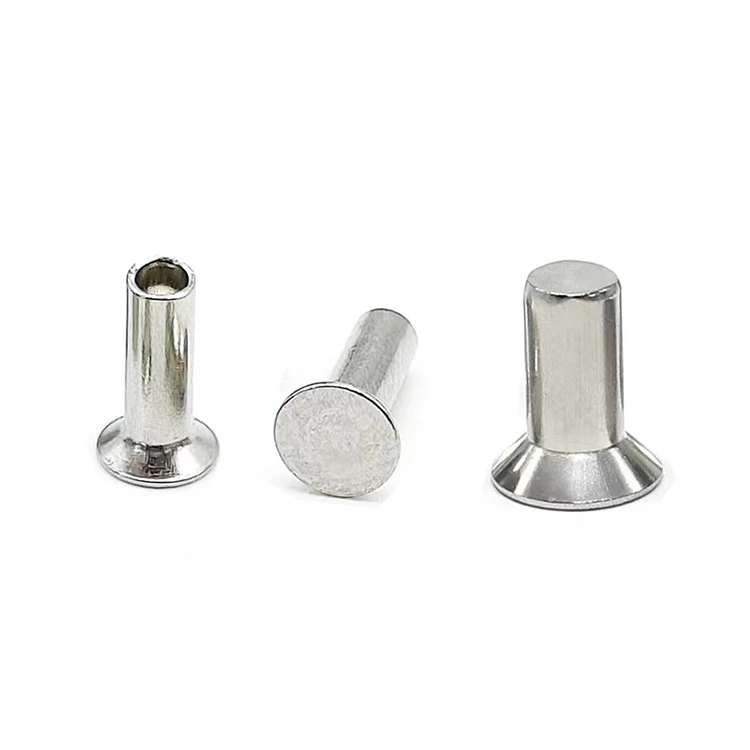Nity
As one of professional manufacturer in China, Notin would like to provide you Rivets. And we will offer you the best after-sale service and timely delivery.
What is a rivet?
A rivet is a permanent mechanical fastener used to join two or more materials. Rivets work by inserting a metal pin into an aligned hole and deforming the end, creating a strong, secure, and durable connection. Unlike temporary fasteners like screws, rivets do not rely on threads, but instead form a permanent connection, making them ideal for applications requiring high strength, durability, and vibration resistance.
Classification of Rivets
Rivets are typically categorized by head shape, degree of hollowness, or material.
Based on head shape, rivets can be classified as flat head rivets, round head rivets, countersunk head rivets, mushroom head rivets, universal head rivets, truss head rivets, etc.

Based on degree of hollowness, rivets can be classified as solid rivets, semi-tubular rivets, or full tubular rivets.
Based on material, rivets can be classified as brass rivets, stainless steel rivets, steel rivets, aluminum rivets, copper rivets, etc.
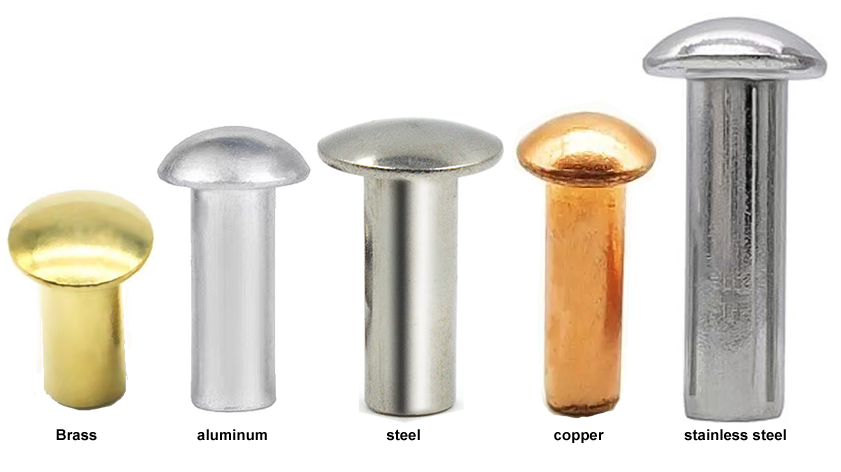
What surface finishes are available for rivets?
Rivet surfaces are typically treated with rust-proofing treatments, primarily electroplating, including zinc plating, nickel plating, chrome plating, tin plating, gold plating, and silver plating. Electroplating is a common rust-proofing method for rivets. It applies a layer of plating to the rivet surface through physical or chemical methods. The plating effectively prevents corrosion and rust, while also providing a certain aesthetic effect.
Another special surface treatment method is head coating. Head coating is performed after the rivet is electroplated. This allows for a variety of colors on the rivet head, achieving an aesthetically pleasing finish.
Aluminum rivets cannot be electroplated, but they can be anodized. Anodizing also allows for a variety of color options, but the unit price is higher than electroplating.
Rust-proofing the rivet surface is crucial, effectively extending the rivet's service life and ensuring a secure connection. Different rust-proofing methods are suitable for different environments and applications, so the choice should be tailored to the specific situation.
- View as
Aluminiowe nity drążone
Aluminiowy nit drążony jest powszechnym elementem złącznym, jest szeroko stosowany w wielu dziedzinach ze względu na niewielką wagę, odporność na korozję i dobrą przewodność elektryczną. Nuote Metals produkuje i sprzedaje aluminiowe nity drążone w Chinach. Mamy ponad 10-letnie doświadczenie w tej branży.
Czytaj więcejWyślij zapytanieNity półpuste z mosiądzu
W Nuote Metals koncentrujemy się na produkcji mosiężnych nitów półdrążonych. W naszych nitach wykorzystujemy głównie mosiądz H65 — mieszankę miedzi i cynku, która zapewnia doskonałą przewodność elektryczną i cieplną, a także solidną odporność na korozję. Materiał ten jest wystarczająco twardy i elastyczny, aby dobrze współpracować z procesami gnicia i nitowania na zimno. Ponadto mosiądz ma naturalny złoty kolor, więc jeśli używasz go do celów dekoracyjnych, często nie będziesz potrzebować dodatkowego powlekania.
Czytaj więcejWyślij zapytanieNity półdrążone z łbem płaskim
Czy zastanawiałeś się kiedyś, jak powstają nasze półdrążone nity z łbem stożkowym? Oto krótki opis:
Najpierw wybieramy odpowiedni drut metalowy i przycinamy go na wymaganą długość. Następnie trafiamy do maszyny do kucia na zimno, która przebija drut i formuje go w podstawowy kształt nitu – to tam tak naprawdę kształtuje się łeb stożkowy i trzpień drążony. Następna w kolejce jest obróbka cieplna; dostosowujemy czas i temperaturę w zależności od materiału, aby mieć pewność, że każdy nit ma odpowiednią wytrzymałość i wytrzymałość. Następnie często dodajemy wykończenie ochronne – na przykład cynkowanie lub pasywację – aby pomóc im zwalczyć rdzę i zapewnić dłuższą trwałość. Nigdy nie pomijamy kontroli końcowej: każda partia jest sprawdzana w celu potwierdzenia, że rozmiar, wykończenie i wydajność odpowiadają standardom.
Zawsze chętnie oprowadzimy klientów po okolicy – jeśli kiedykolwiek będziesz w okolicy, daj nam znać, a my zorganizujemy wycieczkę!
Nity półpuste z łbem grzybkowym
Nity półwydrążone z łbem grzybkowym wzięły swoją nazwę od charakterystycznego łba w kształcie kopuły, który wygląda trochę jak kapelusz grzybka, połączonego z częściowo wydrążonym trzonkiem. Taka konstrukcja umożliwia nitowi kształtowanie się podczas montażu, zapewniając mocne trzymanie – idealne do zastosowań, w których potrzebny jest zarówno dobry wygląd, jak i solidne wykonanie. Po ustawieniu wydrążony koniec rozszerza się i mocno chwyta, podczas gdy główka i górna część trzonka pozostają solidne, zapewniając dodatkowe wsparcie.
Czytaj więcejWyślij zapytanieNity półrurowe żelazne
Nity półrurowe żelazne to łączniki mechaniczne z wydrążonym ogonem. Działają poprzez ściskanie pustej części i wyginanie jej na zewnątrz, aby utworzyć trwałe mocowanie zatrzaskowe. Podstawowe zastosowania koncentrują się w branżach lekkich, takich jak odzież, obuwie i bagaż. Zastosowanie miękkiego drutu pozwala uniknąć pęknięć podczas połączeń nitowych i zapewnia korzyści finansowe. Nuote Metals jest profesjonalnym producentem nitów półrurowych żelaznych. Nasze nity charakteryzują się wysoką jakością, a każdy z nich przechodzi szczegółową kontrolę, aby zapewnić satysfakcję klienta.
Czytaj więcejWyślij zapytanieNity półpuste z łbem stożkowym
Dlaczego warto wybrać nity półpuste z łbem stożkowym zamiast innych metod łączenia? Wynika to przede wszystkim z ich wyjątkowych zalet. Po zamontowaniu głowica jest zrównana z powierzchnią, co pozwala uniknąć potencjalnych zakłóceń lub zagrożeń bezpieczeństwa spowodowanych występami. Półpusta konstrukcja sprawia, że proces nitowania jest stosunkowo prosty i nie wymaga skomplikowanego sprzętu; zwykle można to zrobić ręcznie lub za pomocą narzędzi pneumatycznych. Ten typ nitu nadaje się do materiałów o różnej grubości i można go dostosować do różnych sytuacji poprzez regulację siły nitowania.
Czytaj więcejWyślij zapytanieWhat are the advantages of rivets over other fasteners?
1. Ease of Installation
Rivets are fast to install, and even fully automated for high-volume applications, resulting in a simple and efficient operation process.
2. Connection Reliability
The riveting process is standardized, with strict quality control, resulting in highly stable connections. Visual inspection allows for quick verification of connection quality.
3. Vibration and Impact Resistance
Rivets connect through deformation or interference fit, providing strong clamping force and excellent vibration resistance, capable of withstanding vibration and shock.
4. Low Cost
Rivets are easy to install and can be fully automated, saving significant labor costs.
What are the advantages and disadvantages of rivets made of different materials?
Aluminum Rivets
Advantages: Lightweight, reduces overall product weight, low cost, suitable for general civilian applications.
Disadvantages: Low tensile and shear strength, unsuitable for high-strength workpieces, prone to electrochemical corrosion when in contact with metals such as stainless steel.
Stainless Steel Rivets
Advantages: Strong corrosion resistance, high hardness, suitable for high-strength workpieces (such as marine equipment)
Disadvantages: Higher cost, typically more expensive than aluminum rivets of the same specification.
Brass and Copper Rivets
Advantages: Excellent conductivity (such as connecting electronic components), good corrosion resistance.
Disadvantages: Higher cost, more difficult to process.
Steel Rivets
Advantages: High hardness, high connection reliability, and wide applicability.
Disadvantages: Compared to other materials, iron rivets are more prone to rusting.
What are the main applications of rivets?
Rivets have a wide range of uses, from small items like a pair of scissors to large items like airplanes and ships, as well as in high-precision medical applications.
Industrial Manufacturing
Rivets are used in a wide variety of industrial fields, wherever there is a need to connect two or more materials.
Electronics
Rivets secure heat sinks and chips, providing both vibration damping and noise reduction, and are widely used in the cooling systems of electronic products such as computers and mobile phones.
Automotive
Rivets are widely used to connect components of automobile bodies and chassis, such as doors and hoods. Their lightweight and corrosion-resistant properties make them an indispensable joining method in automotive manufacturing.
Aerospace
In aircraft manufacturing, rivets are used to connect different fuselage components, such as wings and tailplanes. Millions of rivets create high-strength, corrosion-resistant joints. Aluminum and titanium alloy rivets are often used to connect components of corresponding materials, ensuring stability in extreme environments.
Rivets are used everywhere. The above examples only represent a small number of their applications. We see rivets everywhere in our daily lives, such as on scissors, folding beds, and strollers etc. Rivets can be customized to different sizes and materials depending on the application.
Nuote Metals has specialized in the rivet industry for over a decade. Our factory is located in Dongguan, a city known as the "World Factory," a city with a developed industry and convenient transportation. This allows us to respond quickly when acquiring raw materials and supporting surface treatments, meeting our customers' needs for quick access to samples and bulk orders. We produce 10 million rivets daily and have molds of various specifications, allowing us to produce rivets as small as 0.8mm and as large as 10mm. We welcome your inquiries and visits.

